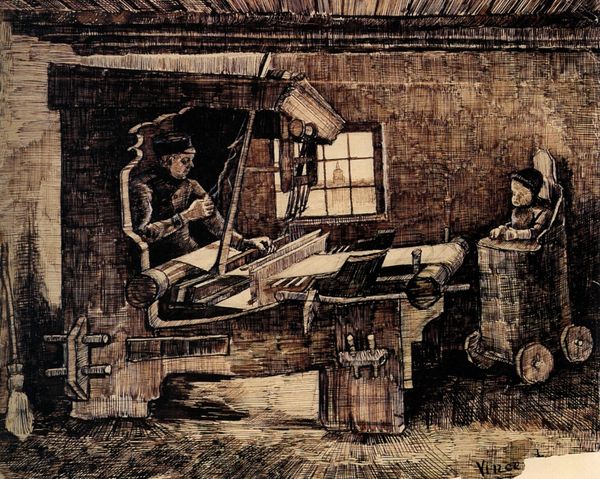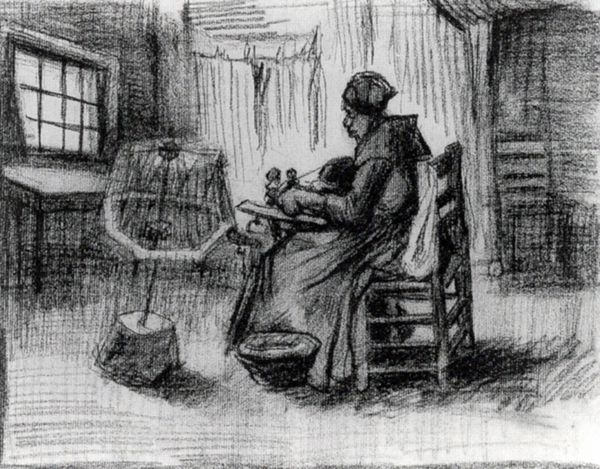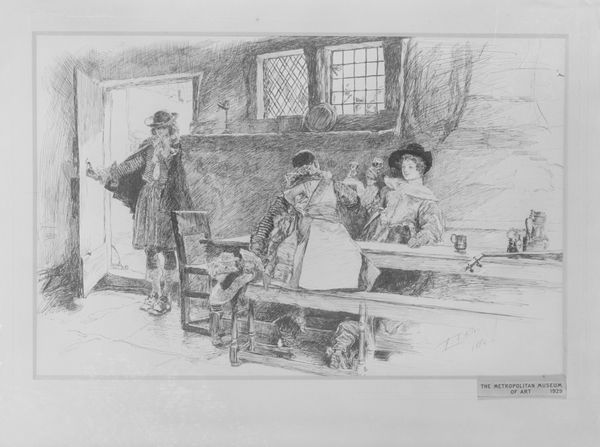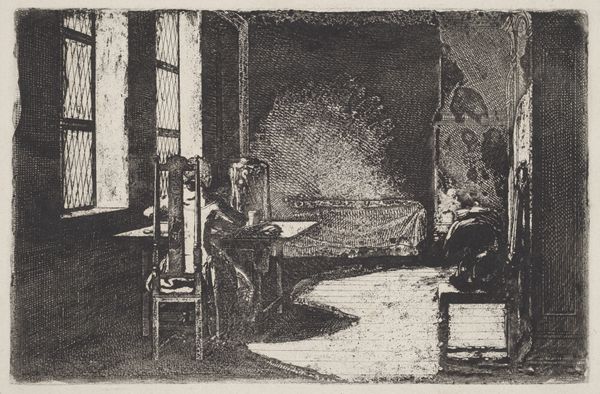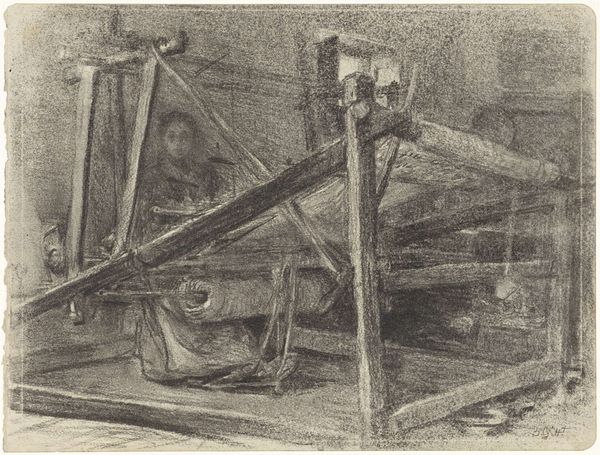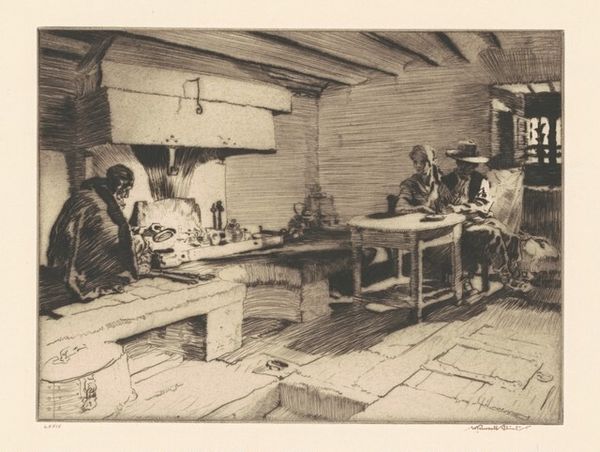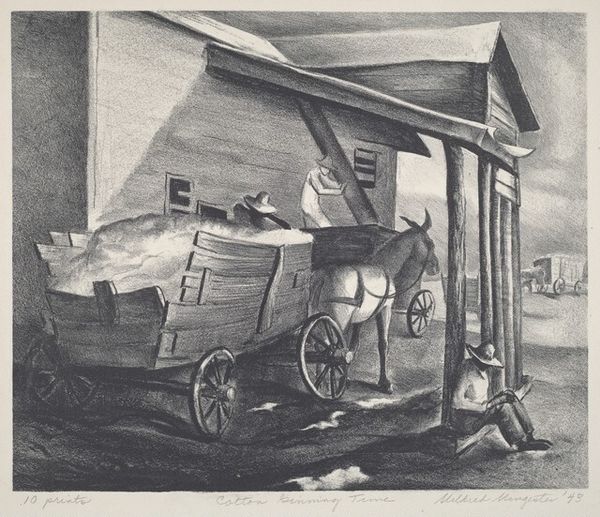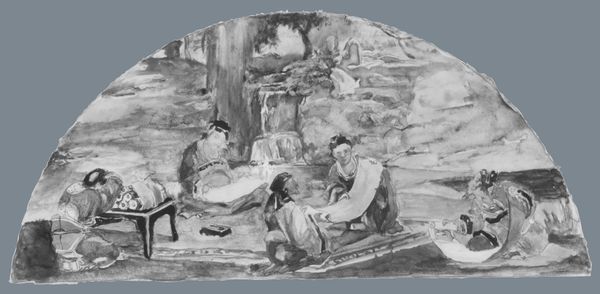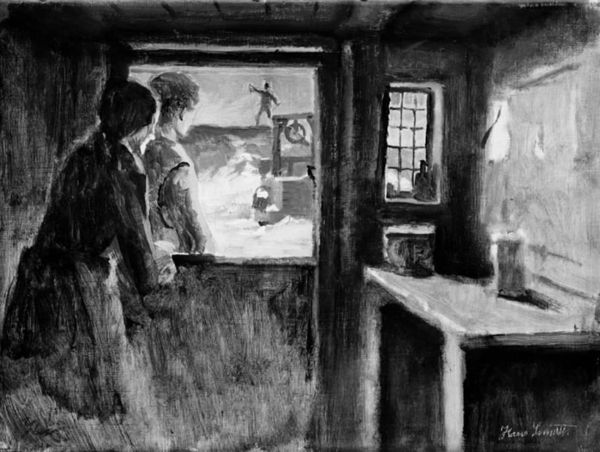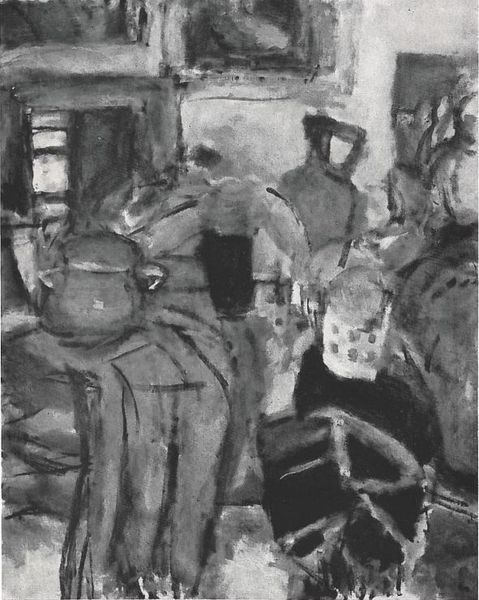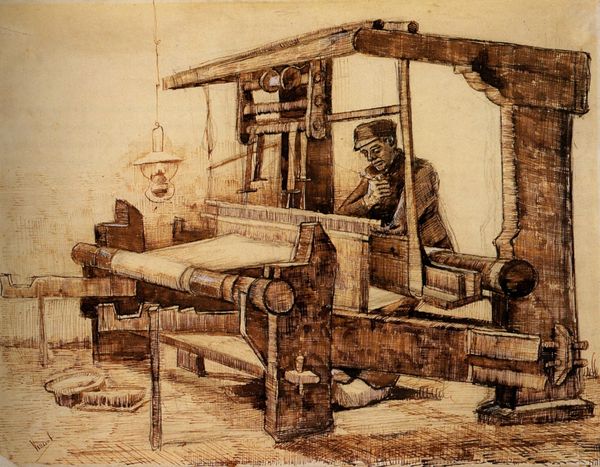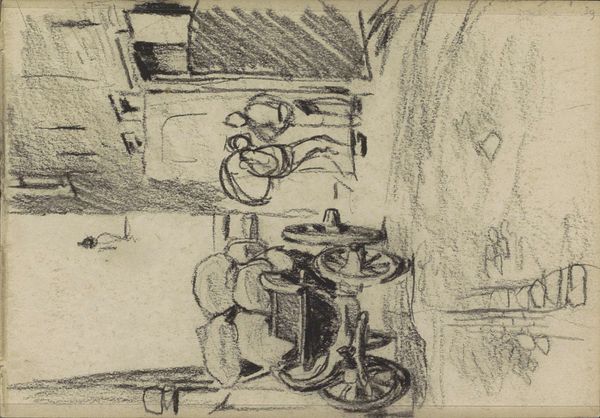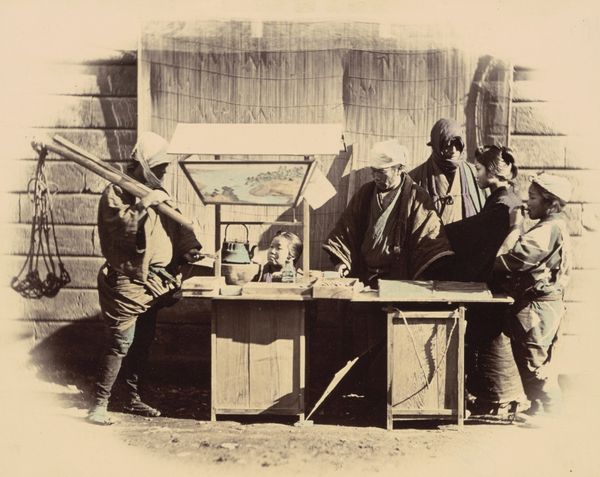
Weaver Facing Right, Interior with One Window and High Chair 1884
0:00
0:00
vincentvangogh
Kuboso Memorial Museum of Arts, Izumi, Japan
drawing, charcoal
#
portrait
#
drawing
#
dutch-golden-age
#
charcoal drawing
#
men
#
portrait drawing
#
genre-painting
#
charcoal
#
northern-renaissance
#
charcoal
#
realism
Copyright: Public domain
Curator: Let’s turn our attention to this charcoal drawing by Vincent van Gogh, titled "Weaver Facing Right, Interior with One Window and High Chair," created in 1884. What strikes you initially? Editor: The starkness. It's overwhelmingly grayscale, yet it captures the tangible reality of labor and interior space. It emphasizes the rough texture of the weaving equipment and even the humble broom propped in the corner. You can practically feel the grit. Curator: Indeed. This work comes from Van Gogh's early period, specifically his time in Nuenen, where he focused intensely on depicting peasant life. He was deeply influenced by the Realist movement and its commitment to portraying the lives of ordinary people with honesty and empathy. The public role of art to depict the marginalized. Editor: Absolutely. And his choice of charcoal here is critical. Charcoal as a medium lends itself to the depiction of texture. Look at the weaver's hands, rendered with such deliberate, almost crude, strokes, indicating hard, physical work. And the loom itself – a machine that both enables and confines the weaver’s existence. We tend to view textiles as objects of beauty but we are missing that the labour making textiles happen inside a larger socioeconomic landscape. Curator: Precisely. Consider the composition – the placement of the weaver in relation to the loom, almost swallowed by it. The window offers a glimpse of light, a possible suggestion of hope, yet the interior is predominantly dark, hinting at social inequalities and economic hardships faced by the working class. He visited these people repeatedly, not just to capture the visual aspects but to convey something about their living conditions. Editor: It's about materiality and how material conditions shape lives. Think of the actual fibers the weaver works with. Each thread is connected to a process, a source. Consider too, what will come of the product that he's spending every waking hour on? This isn’t some idyllic craft, this is the grueling manufacture of commodities. Curator: Van Gogh’s social consciousness comes through very clearly here. He deliberately chose subjects like weavers to make a statement. There's the social dynamic between the art world and society, with its gatekeepers deciding what's "worthy" of depiction and who are the protagonists. It seems Van Gogh attempted to push back. Editor: Well, it’s left me considering the true cost of textiles and all of the processes surrounding its creation. The value we give things and who we've decided is worthy of the spotlight, versus what it really takes to make our world. Curator: For me, it shows how much can be expressed in one drawing—both a person and a set of economic realities, interwoven just like the threads on that loom.
Comments
No comments
Be the first to comment and join the conversation on the ultimate creative platform.
